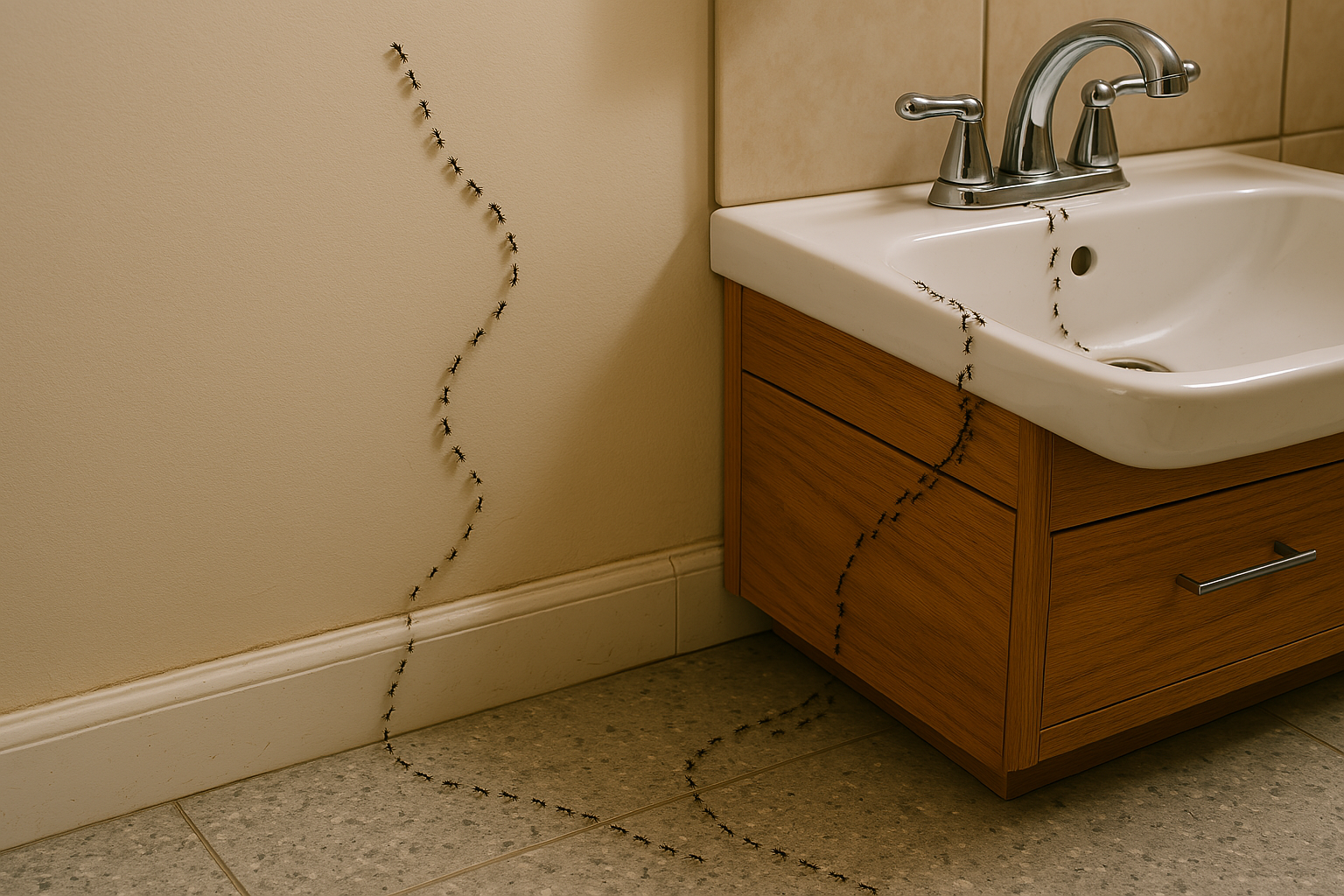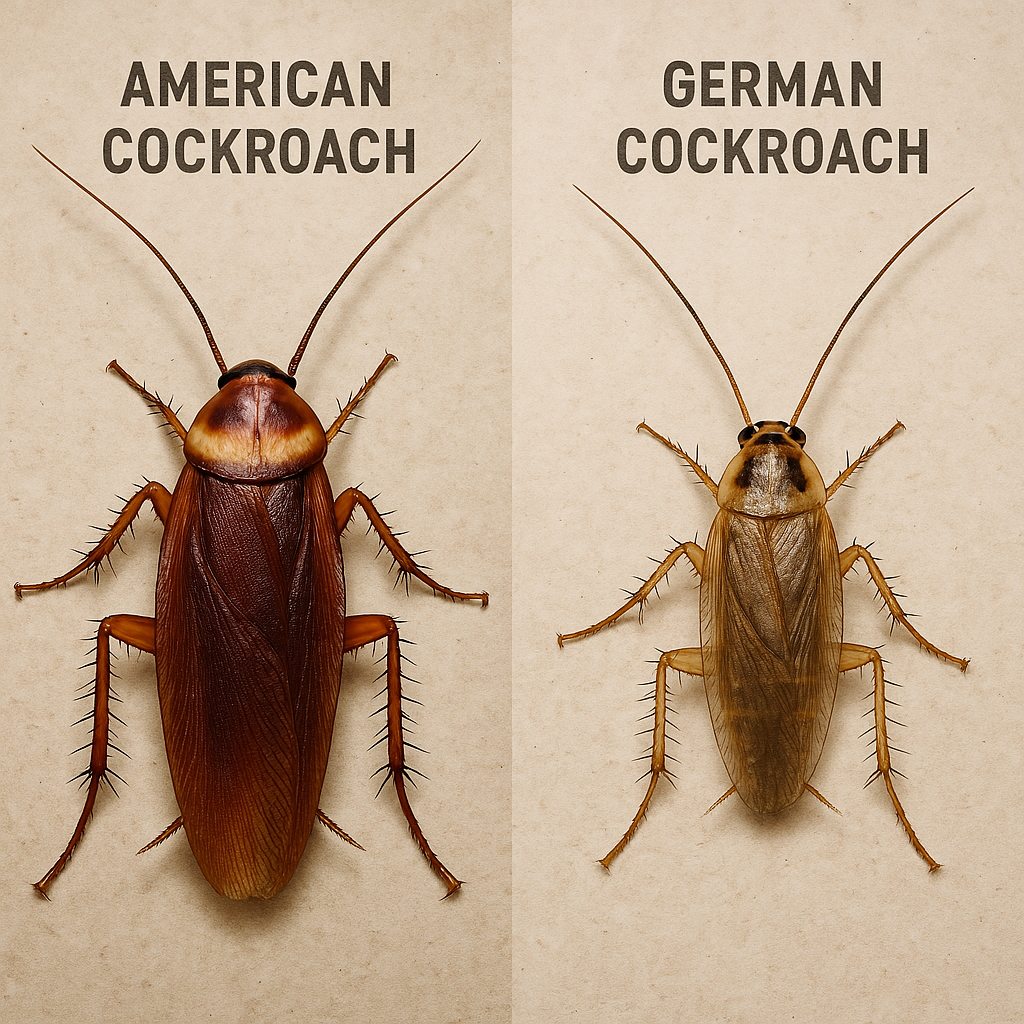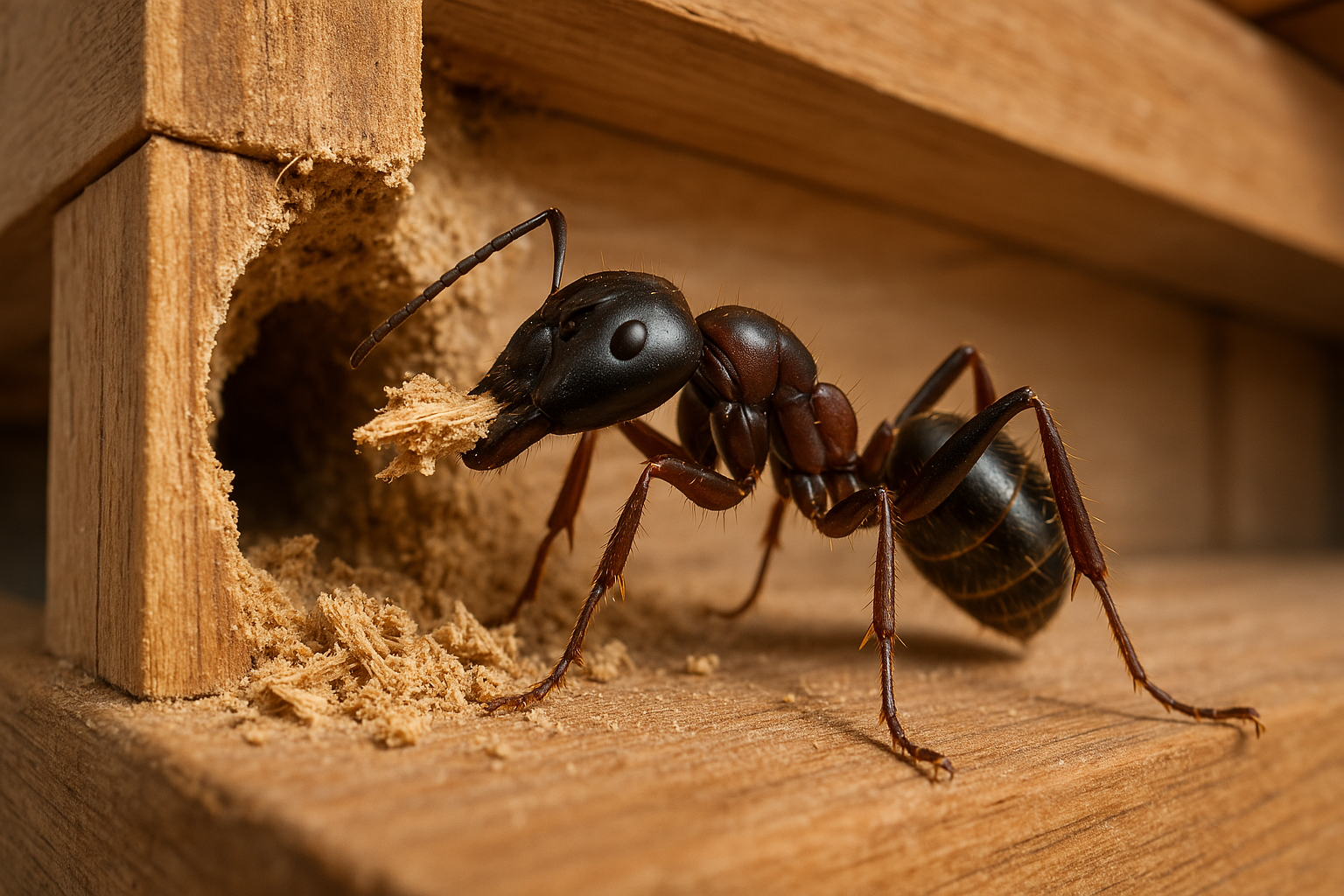Termites vs Ants

Termites and ants are commonly confused due to similarities in appearance and behavior. Each species of pests come with their own risks which require a specific treatment option which is why it is critical to identify the right bug. Misidentifying termites as ants can have serious consequences because termites can cause extensive damage if proper treatment is delayed due to pest misclassification. This is why having an experienced pest control expert come out for an inspection is critical to ensuring your home gets proper treatment.
Appearance
The appearance of termites and ants can be confusing because they are both tiny creatures that are part of a larger social colony. Termites and ants have similarities that extend beyond appearance and even go as far as individual roles within a colony. Ants and termites both have workers, soldiers, and reproductives who share similarities in appearance as they play similar roles that will be explored further below.
Antennae
Upon close inspection, termites and ant antennae have one distinguishable feature that can help differentiate the 2 species. Ants’ antennae typically have a bend in the center that allow the antennae to face forward even though they protrude from the side of the ant’s head. Termite antennae spear forward from the front of the termite’s head and stays straight without the elbow found in ant antennae.
Bodies
Termite and ant bodies differ slightly. Termites will have a slender body that does not segment into different sections like ants do. Ants’ bodies have clearly defined sections that pinch off which make identifying the different sections of the body much easier.
Wings
Termite and ant reproductives will both grow wing to help them find a new colony location. Termites have 2 pairs of wings on each side of the body that are the same length as the other wing. Both wings are longer than the termite. Ants have wings that are different lengths with the forward wings being slightly larger than the rear wings. The longer set of wings on an ant is slightly longer than the ant body but not by much.
Color
Worker termites will resemble white ants as they generally stay inside the colony and are not exposed to sunlight often. Soldier termites may be slightly darker with larger mandibles used to protect the colony. Ants, on the other hand, are typically much darker and come in shades of red, black, and brown. It isn’t often when you will see termites outside of the colony but seeing signs of lighter color ants, is usually a sign of termite activity.
Behavior
As mentioned above, termites and ants share more similarities than just appearance. They share much of the same social structures which can be broken down into 1 of 3 castes that provide support to the colony. Both termite and ant colonies can be broken down into workers, soldiers, and reproductive. Workers help build the colony while also providing the colony and its queen with food and resources it needs to thrive. Soldiers are responsible for protecting the colony and reproductive are designed to find new colony locations to help expand the footprint of the colony.
Diet
The diet of these bugs is what sets them apart. Termites rely on a diet of cellulose which is why these bugs will cause significant damages to your home. Ants will eat just about anything else that is left out. Ant colonies survive off of much of the same food that humans do which is why they will be found looking for scraps in trash and wherever discarded food is found. This will lead them to invade your kitchen and pantry in search of food remnants that are left out for them to consume.
Damages
Termite damages can be significant. Since termites feed on wooden structures, they will consume the wooden interior of the framing used to build your home or business. Termites will devour the inside of wood before the damages are found which can mean that extensive damages can be caused before treatment is introduced. In addition to structural damages, termites will also consume paper and other cellulose rich Ants don’t cause physical damages but can cause other problems like contaminating food supplies with pathogens that can get people sick. These pathogens include serious bacteria and viruses like E Coli, salmonella, and others.
Attractants
Ants are drawn to trash and food scraps that are left out by humans. They are excellent scavengers and will consume just about anything that they can find to provide food for their colony. This includes human food, pet food, and trash. Treating for a small ant problem is usually as simple as eliminating the attractant and cleaning up any leftover ants with an ant spray. Termites are in search of wood and cellulose rich nutrition for their colony. Getting rid of termites can be much more difficult when dealing with a full-blown termite problem. Unfortunately, you can’t get rid of the attractant, so termites require treatment.
Nests
Ants and termites will both make their way inside your home if they find a stable source of food. Depending on the species of termites, drywood will nest inside the wooden structures while subterranean termites will nest below ground. Ants will generally have a nest somewhere outside before moving into a home in search of food. Different species of ants can present unique problems. If carpenter ants find their way in, they can cause damage similar to termites because they will burrow into wooden structures to create chambers for their nests. These ants don’t eat the wood, they just chew it up and shred it into little splinters.
Lifespan
Most worker termites can live a lifespan of up to a couple years in optimal conditions and when there are enough resources to support a colony. This life span is extended even further for reproductives and the queen. Most ants have a much shorter life span and will only live for up to a few months. Ant queens can live for a couple years but the entire life span of most ants is extremely short.
Life Cycle
Termites’ life cycle can be described as an incomplete metamorphosis. They hatch into nymphs before maturing into one of three castes that is a selected outcome determined by the colony’s needs. Each phase from egg gestation to nymph cycles, takes time. By the time termites reach adulthood, they still have several years left to help grow the colony. Ants hatch into larvae which develop through the pupal stage before reaching adulthood. This entire process takes much less time. Most ants and termites will end up workers while a small portion become soldiers and reproductives.
Schedule an Inspection Today!
Leave the pest identification up to the professional. If you see either of these types of bugs in your home, it is best to get a pest control inspection scheduled. Our team of licensed and trained pest control experts can help create a custom treatment strategy designed to stop bugs and prevent them from returning. Call EcoGuard Pest Management today to schedule an appointment.

















